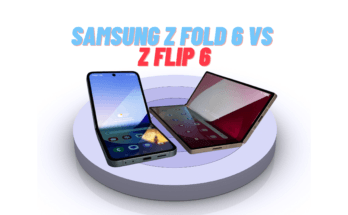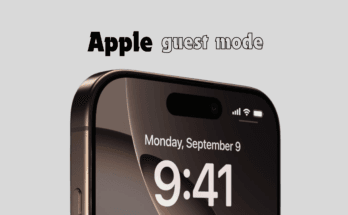The Rivalry Between Two Giants
When it comes to flagship smartphones, Google has consistently been at the forefront, and their Pixel series has set a high standard for premium phones. However, with the release of the Google Pixel 9 Pro, comparisons to its predecessor, the Pixel 8 Pro, were inevitable. Let’s dive into how these two top-tier phones stack up against each other and explore whether the Pixel 9 Pro truly offers an upgrade worthy of attention.
Google Pixel 9 Pro: Fresh, Compact, and Powerful
The Google Pixel 9 Pro stands out from the crowd by compacting flagship performance into a sleek, smaller body. This phone embodies Google’s push towards a more polished and refined look, offering a minimalist yet premium design. With a size that caters to those who prefer smaller phones without sacrificing performance, it’s a welcome change from the Pixel 8 Pro’s larger frame.
Pixel 9 Pro – Pros:
- Sleek, compact design for easy handling
- Exceptional camera quality in all lighting conditions
- Enhanced AI-driven features that push smartphone functionality forward
Cons:
- Some AI features feel gimmicky
- Flagship performance falls short of competitors in the same price range
- Pricing feels steep, especially when compared to the Pixel 8 Pro
Google Pixel 8 Pro: A Strong Predecessor
Launched in late 2023, the Google Pixel 8 Pro made waves with its triple-camera system, smart AI capabilities, and competitive pricing. It was an exceptional device for its time and continues to be a strong contender in 2024, especially for those seeking a larger screen and robust performance.

Pixel 8 Pro – Pros:
- Excellent triple-camera setup for stunning photography
- Competitive pricing with substantial value
- Seven-year software update guarantee, a standout in the market
Cons:
- Slightly outdated design
- Performance falls behind other flagship models
- AI features are less polished than in the Pixel 9 Pro
Design: Small Yet Impactful vs. Large and Familiar
When comparing the design of both phones, the Pixel 9 Pro’s compact dimensions (152.8 x 72 x 8.5mm) make it a perfect choice for users who value portability. Despite its smaller size, the phone feels premium, featuring a minimalist flat design that differentiates it from the more curvaceous Pixel 8 Pro (162.6 x 76.5 x 8.8mm). Google has dropped the curved edges and gone with a more industrial look, similar to Apple’s iPhone series, making the Pixel 9 Pro stand out as a modern and sleek alternative.
Display: Brightness or Real Estate?
When it comes to screen size, the Pixel 8 Pro still holds the advantage, featuring a 6.7-inch OLED display with a resolution of 1344 x 2992 pixels. Meanwhile, the Pixel 9 Pro offers a smaller 6.3-inch OLED screen with a similar resolution of 1280 x 2856, making both displays sharp and vibrant. However, the Pixel 9 Pro has a distinct advantage with a peak brightness of 3,000 nits compared to the Pixel 8 Pro’s 2,400 nits. This makes the newer model much better for outdoor usage in bright conditions.
Key Takeaway: The Pixel 8 Pro offers more screen space, while the Pixel 9 Pro wins in terms of brightness and portability.
Performance: Minor Upgrades, but Future-Proofing Matters
Under the hood, the Pixel 9 Pro comes equipped with the newer Google Tensor G4 chip, while the Pixel 8 Pro features the older Tensor G3. While both processors handle most tasks well, the upgrade in raw performance is modest, with around a 15% boost in CPU performance and up to 20% in GPU performance. However, where the Pixel 9 Pro truly stands out is in its RAM, offering 16GB compared to the 12GB on the Pixel 8 Pro, making it more future-proof, especially for AI-driven tasks.
Cameras: Google’s Signature Excellence
Google’s Pixel lineup has always been known for stellar photography, and both the Pixel 8 Pro and Pixel 9 Pro deliver. They feature identical camera hardware on paper: 50MP wide, 48MP ultra-wide, and a 48MP 5X zoom camera. However, the Pixel 9 Pro makes slight improvements in low-light performance with a wider f/1.7 aperture on the ultra-wide lens. Additionally, the selfie camera on the Pixel 9 Pro is upgraded to a 42MP sensor, a notable improvement over the 10.5MP on the Pixel 8 Pro.
Camera Verdict: While both phones excel in photography, the Pixel 9 Pro edges out with its enhanced low-light performance and upgraded front-facing camera.
Battery Life and Charging: Efficient, Yet Not Groundbreaking
Battery life on both phones is comparable, though the Pixel 9 Pro packs a smaller 4,700mAh battery compared to the Pixel 8 Pro’s 5,050mAh. Despite this, the Pixel 9 Pro’s more efficient Tensor G4 processor allows it to last longer in real-world usage. However, both phones support similar wired and wireless charging speeds, capping at 30W and 27W respectively. While decent, these charging speeds lag behind many of their flagship competitors.
Price and Availability: Which One Fits Your Budget?
The Pixel 9 Pro launched with a starting price of $999 for the 128GB model, which aligns closely with the Pixel 8 Pro’s original price. However, as the Pixel 8 Pro has been on the market for over a year, it’s now available at discounted prices, making it a tempting option for those seeking flagship features without breaking the bank.
Final Verdict: A New Contender Takes the Crown
Ultimately, the Google Pixel 9 Pro brings meaningful upgrades to the table, from a brighter display to better AI capabilities and a more refined design. It’s the clear winner in terms of overall performance and features. However, for budget-conscious buyers, the Pixel 8 Pro remains a solid choice, especially with its larger screen and reduced price tag.
If you’re looking for the latest and greatest, the Pixel 9 Pro is the phone for you. But if you’re in the market for a more affordable flagship experience, the Pixel 8 Pro still holds strong in 2024.



